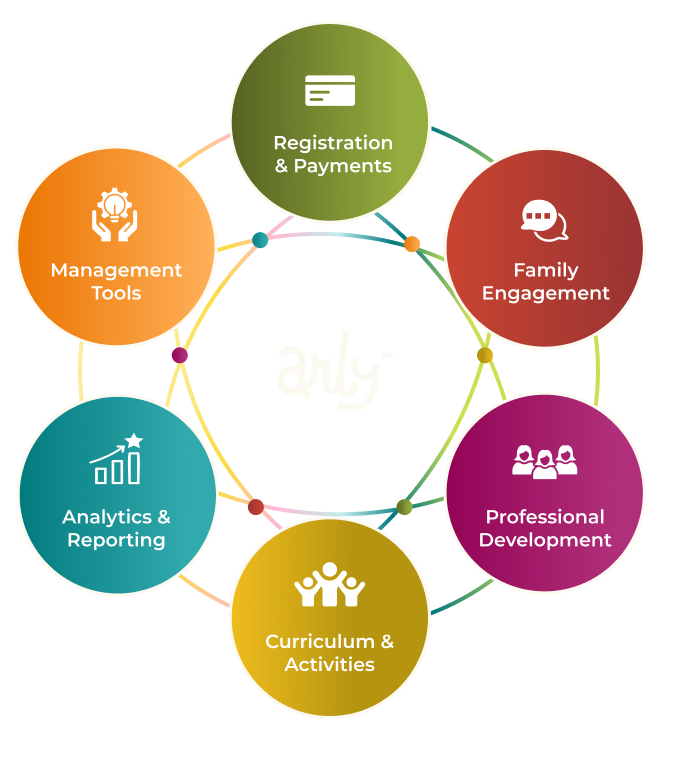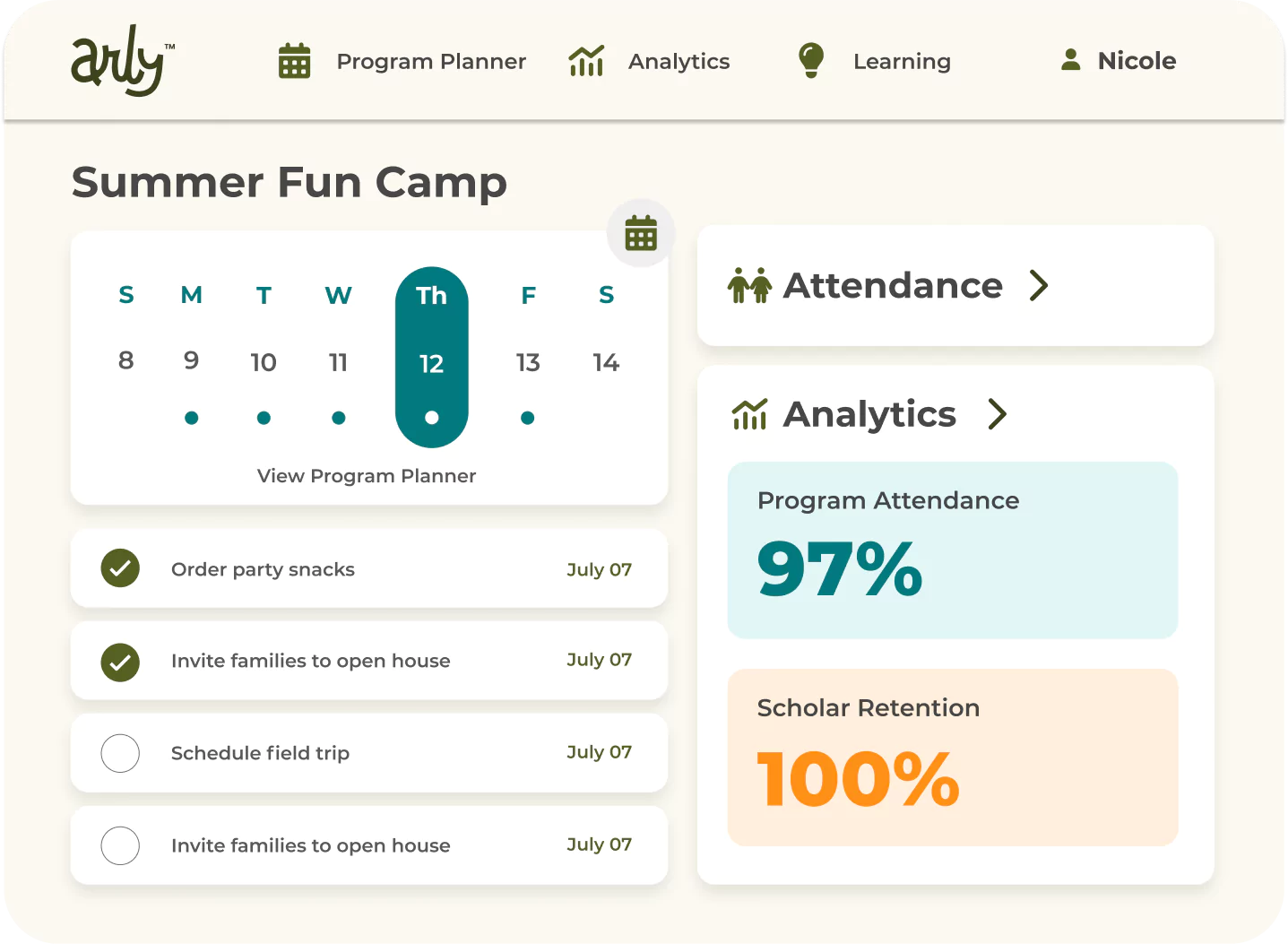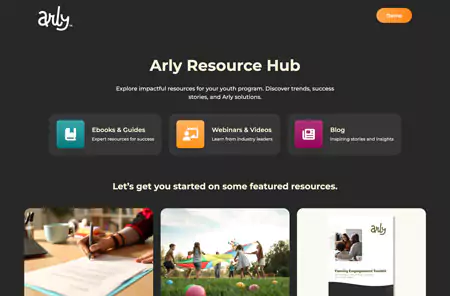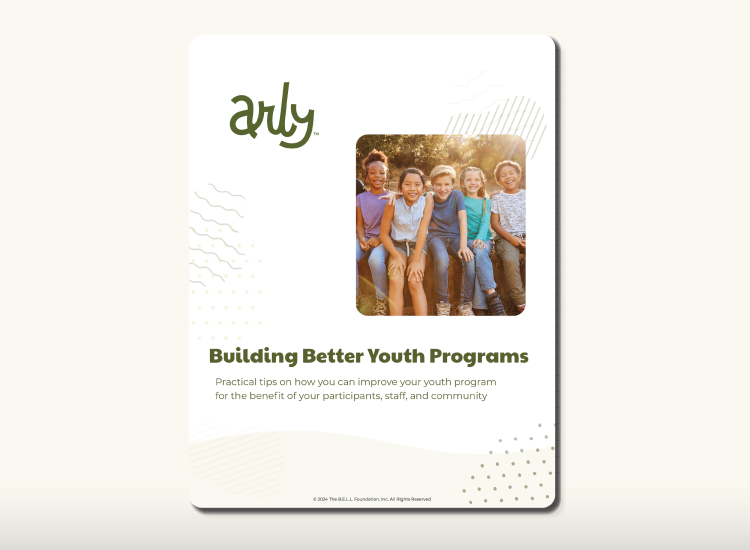Teachers and Tech: 7 Benefits of Accessing Curriculum on a Digital Platform
By Arly Communications on June 28, 2023
Today’s education professionals are discovering the perks of a recent industry-wide paradigm shift: going paperless.
Traditionally-printed materials have their place in classrooms, but administrators, teachers, and youth program volunteers are increasingly opting for the benefits of digital-first curricula. For teachers, the exclusive use of print materials for classes dropped from 22 percent in the 2018-19 school year to just 5 percent by Spring 2022.
Embracing digital instructional materials is a great way for teachers and youth programmers to leverage technology for greater convenience and an enhanced educational experience—among other advantages.
Let’s look at seven reasons a digital-first solution for accessing curriculum is worth considering and how your community stands to benefit.
1. Reduced Need for Printing
After shifting to a digital-first curriculum, teachers and administrators can spend significantly less time printing, or worrying about running out of printed resources. No more waiting in line in the copy room early in the morning, having to head home to make copies, or realizing that you should have stopped by the printer before you left your program facility; instead, you can stress less and focus more on engaging with students.
In addition to saving you time, this also saves your program money since you don’t have to stock up on ink and paper.
2. Remote Access for Easy Planning
When your curriculum is on a cloud-based digital platform, all you need to access it is an internet-enabled device, such as a laptop, tablet, or even a phone. This allows teachers and program administrators to work wherever they happen to be.
Instead of feeling tied to a desk or having to tote bulky books and easy-to-spill folders everywhere, teachers can easily plan and manage engaging, well-thought-out programs from a coffee shop or the comfort of their own home.
3. A Multimedia Experience for Educators
Kids aren’t the only ones with different learning styles. Teachers also have their own preferred ways of digesting information.
A physical paper curriculum is excellent for people who learn by reading or writing. But if you’re more of a visual or auditory learner, you’ll love the way a digital curriculum can incorporate visuals, videos, audio files, and other built-in ways to cater to different learning and educating styles.
4. Hyperlinking to Additional Resources
Ever come across a line of text in a physical book that you wished you could easily highlight and Google—or worse, found a printed-on-paper hyperlink?
When educators and program leaders work with digital materials, linking to resources is a definite benefit. A digital-first curriculum allows you to access related online resources directly from the content, keeping you flexible when kids crave more on a particular subject or activity. This makes creating and providing accessible, helpful educational tools much more straightforward.
5. Automatic Updates to the Curriculum
Traditionally, paper curriculum is updated every five to 10 years. This makes sense. It’s difficult to update a system that requires printing reams of paper and re-issuing physical curriculum copies.
But a digital curriculum can be updated continuously, so you’re always working with the best possible information. For example, instructional materials in a platform such as Arly can continuously be updated as feedback and new ideas come in.
If you’re worried about the idea of change, remember that updates don’t necessarily mean changes; rather, updates can simply mean more helpful resources or new, engaging activities for program administrators to pick from. It’s important that you feel enabled to offer your team the latest and greatest!
6. Real-Time Access to Activities
Teachers know that, no matter how detailed your lesson plan is, it’s impossible to predict how things will go in the classroom or program facility. When real life happens, educators need to be ready to make changes on the fly.
With a digital curriculum, staff can quickly access more ideas if they need to pivot to a new or different type of activity. Whether they find time for an extra activity at the end of the day or need to change things up as they see a planned activity isn’t going to land well with the current group, they’ll have everything they need at their fingertips with digital-first resources. From the kids’ perspective, it will look seamless.
7. Curriculum Usage Tracking
Another huge advantage that comes with digital instructional platforms? The ability to track usage.
Through easy-to-navigate dashboards, administrators can glean insights about real-life staff curriculum use. This helps program planners know which resources are truly helpful for their program administrators and where there may be gaps. This type of data tracking can help you make more informed decisions that drive your program forward.
Ready to realize the practical benefits of digital instructional materials?
Embracing an online curriculum, digital lesson plans, and other online resources for teachers offers myriad benefits to everyone involved—from remote, real-time access to the ability to leverage multimedia elements to cater to different learning styles.
If you’re considering a digital curriculum to enhance your teaching and learning environment, Arly provides a centralized way for you to facilitate lesson planning along with the logistics of running youth programs.
Want to see Arly’s suite of digital youth program management tools in action? You can. Fill out this brief form to request a demo!






%20(37).png)

%20(47).png)
%20(25).png)
%20(64).png)